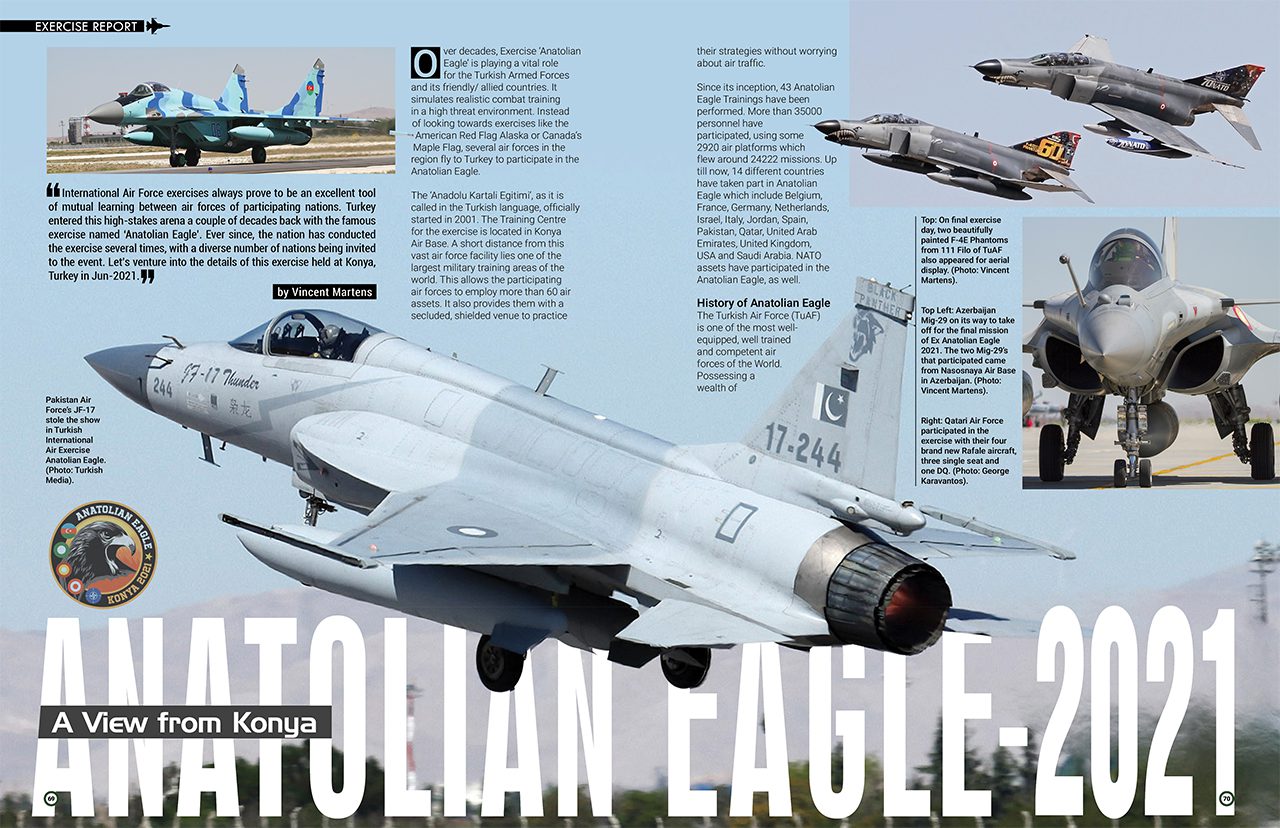International Air Force exercises always prove to be an excellent tool of mutual learning between air forces of participating nations. Turkey entered this high-stakes arena a couple of decades back with the famous exercise named ‘Anatolian Eagle’. Ever since, the nation has conducted the exercise several times, with a diverse number of nations being invited to the event. Let’s venture into the details of this exercise held at Konya, Turkey in Jun-2021.
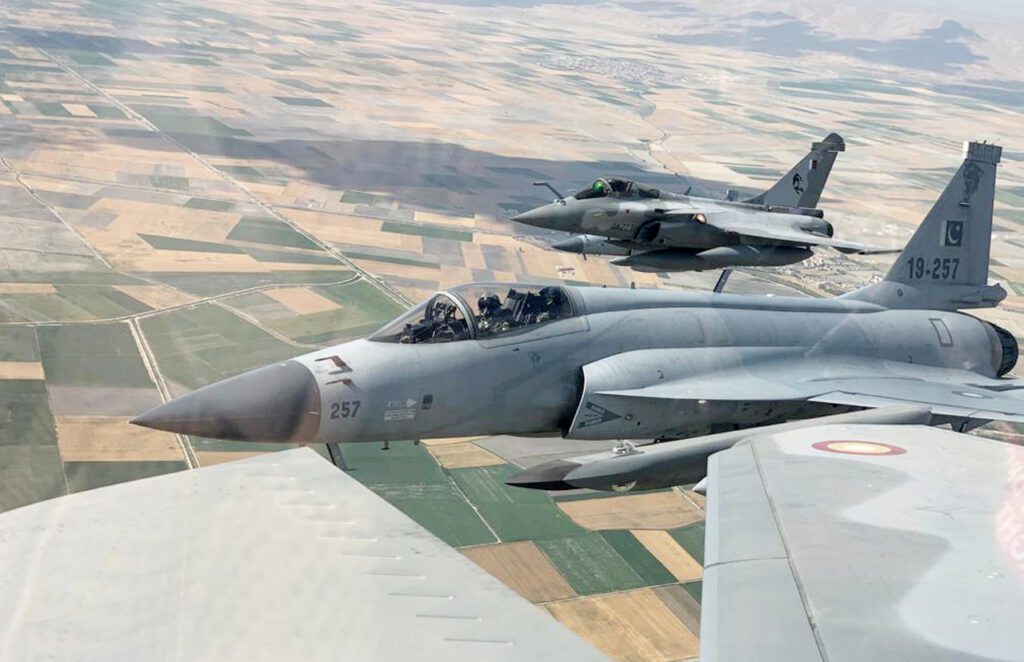
Over decades, Exercise ‘Anatolian Eagle’ is playing a vital role for the Turkish Armed Forces and its friendly/ allied countries. It simulates realistic combat training in a high threat environment. Instead of looking towards exercises like the American Red Flag Alaska or Canada’s Maple Flag, several air forces in the region fly to Turkey to participate in the Anatolian Eagle.
The ‘Anadolu Kartali Egitimi’, as it is called in the Turkish language, officially started in 2001. The Training Centre for the exercise is located in Konya Air Base. A short distance from this vast air force facility lies one of the largest military training areas of the world. This allows the participating air forces to employ more than 60 air assets. It also provides them with a secluded, shielded venue to practice their strategies without worrying about air traffic.
Since its inception, 43 Anatolian Eagle Trainings have been performed. More than 35000 personnel have participated, using some 2920 air platforms which flew around 24222 missions. Up till now, 14 different countries have taken part in Anatolian Eagle which include Belgium, France, Germany, Netherlands, Israel, Italy, Jordan, Spain, Pakistan, Qatar, United Arab Emirates, United Kingdom, USA and Saudi Arabia. NATO assets have participated in the Anatolian Eagle, as well.
History of Anatolian Eagle
The Turkish Air Force (TuAF) is one of the most well-equipped, well trained and competent air forces of the World. Possessing a wealth of resources, the political instability of its neighbors and their incessant arms race, has forced the TuAF to own state-of-the-art weaponry and to maintain the highest level of training. That’s why to achieve this important goal, the TuAF sent a select personnel to participate in ‘Red Flag’ exercise held at USAF’s Nellis Base in Nevada in 1983. A crew of six consisting of four pilots and two WSO’s (Weapon System Officers) were sent. They were initially sent as observers, but later they were able to execute two missions in USAF aircraft. After participating in the exercise and realizing its benefits, the Turkish Air Force saw the need of a training regime like the ‘Red Flag’ to be carried out in Turkey where some of the allied countries from the region could also participate. This resulted in a two self-coordinated joint trainings by the Turkish Air Force in 1988 at Incirlik Air Base. At that time, the training was given the name ‘Anatolian Flag’.
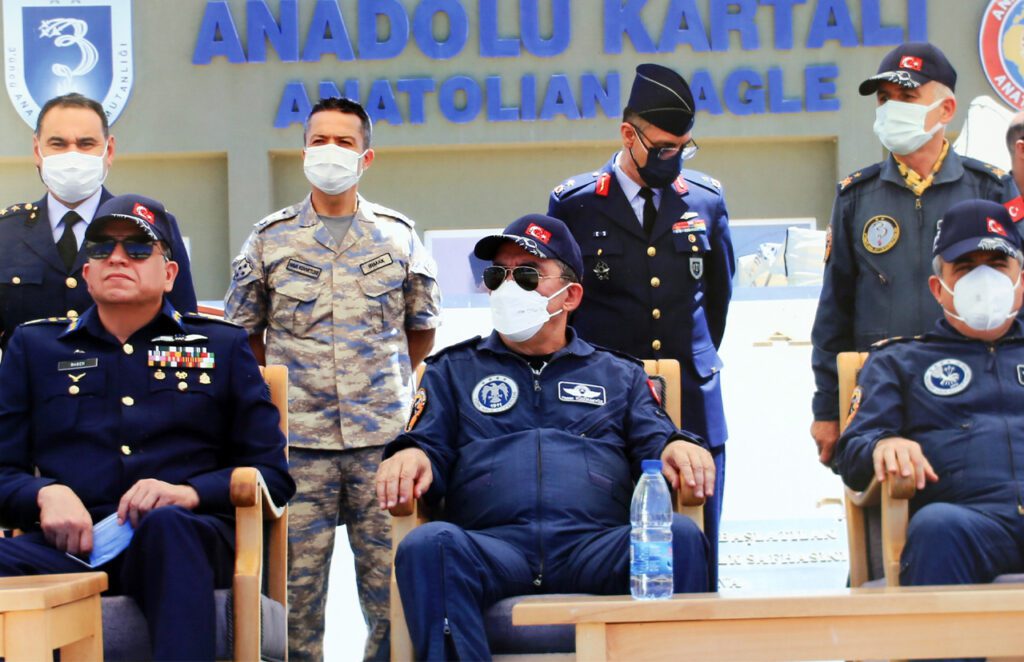
High-ranking senior officers accumulated all the training and benefits of Red Flag and Anatolian Flag and documented them. These documents were then sent to Turkish Air Force Command, with the recommendation that a multi-national exercise of the same stature be held in Turkey. This would give Turkish pilots and personnel the vast amount of experience and training that comes up with such exercises. Other benefits would include enhancement of diplomatic relations with the invited nations and also the money saved by not sending aircraft and pilots all over the world for such exercises. Eventually, the recommendation was given a green signal. The exercise was titled ‘Anatolian Eagle’.
Konya Air Base was chosen to become the home base for the Anatolian Eagle because of its position in the middle of Turkey and the vast space it offered. In June 2000, preparations began for the exercise. The facilities and buildings constructed in Konya were very close in design to the ones in Nellis Base, USA. On June 12, 2001 the Operation Centre was completed together with the Red-White-Blue Headquarters, the ACMI building, and other similar structures. The first Anatolian Eagle (AE-01) exercise was held from 18 – 29 June, 2001. Besides the TuAF, the event was attended by US and Israeli Air Forces.
The Exercise
The Anatolian Eagle (AE) exercise is as close to real war training as it gets. With missions that become more and more complex as the exercise progresses, the participants are subjected to gruelling tasks that only the best of the best can endure. The aim of the exercise is to test and enhance the exchange of knowledge and interoperability between all participants. The Tactical Training Centre in Konya was established to reach similar objectives, which included:
To train fighter pilots for victory and teach them how to survive.
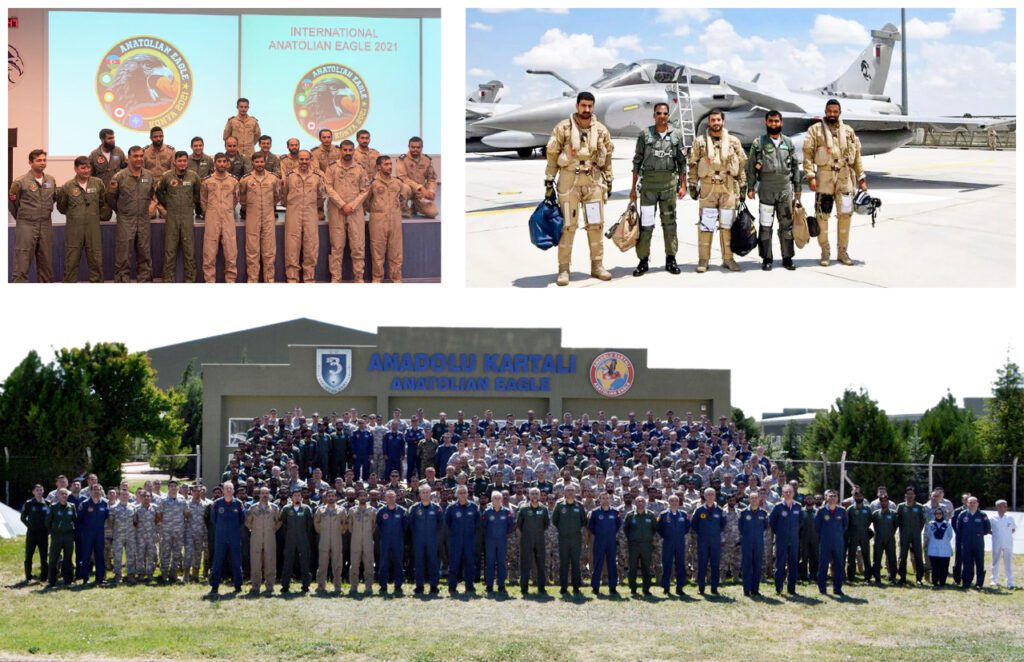
To test and evaluate the combat readiness of the fighter pilots and the progress made during the exercise.
To reach military goals in a short time with the minimum amount of resource and effort based on a given scenario.
To support the testing and development of existing and newly developed weapons or aircraft systems.
To build a training environment in order to attain the requirements of the TuAF Command and foreign air forces.
To develop joined and combined operational procedures.
To increase the operational training level of the pilots and air defence personal in a most realistic environment.
To increase mission effectiveness.
The chance for fighter pilots to execute their planned tactics during COMAO’s (Combined Air Operations).
Exercise Breakdown
The scenario of the exercise consists of a Blue Force that flies CAMAO against the opposing Red Force. The Red Force have tactical and strategic targets, positioned in ‘Red Land’, which have to be eliminated by the Blue Forces. However, these targets are heavily protected by GBAD (Ground Based Air Defence) systems like Surface to Air Missile Sites, etc. The Red Forces will use their fighter aircraft to simulate aggressor tactics.
An electronic warfare test and training range is established, with a wide array of threat emitters, integrated with recognized air picture and ACMI. Everything has been curated to expose aircrews to a high-threat environment. The exercise area gives the pilots the opportunity to fly at low level as well up to 50, 000 feet. Three live firing ranges can be used, which are the Koc, Tersakan, and Karapinar range. During the exercise, TUAF tankers give air-to-air refueling support for both forces. Besides the combat missions, the participants engage in air-lift and air-dropping missions, slow mover escorts, and CSAR (Combat Search and Rescue) missions.
The Red Force or the ‘bad’ guys normally consists of only Turkish aircraft. Two squadrons were based at Konya AB, the 132 and 133 Filo, and these are used as aggressors during the exercise. Besides these, an Electronic Warfare Squadron was assigned to the Red Force.
The White Headquarters is the brain of the Anatolian Eagle where training missions are planned and studies are carried out. The Command Control Centre (CCC) is monitoring and observing all missions in real-time. They have the location, position, and flight information of all participating aircraft. This data is fed into Real Time Monitoring ACMI (Air Combat Maneuvering Instrumentation). The White Headquarters also houses the Radar Operation Room. Locking down and shooting images of SAM and anti-aircraft systems are monitored from these facilities.
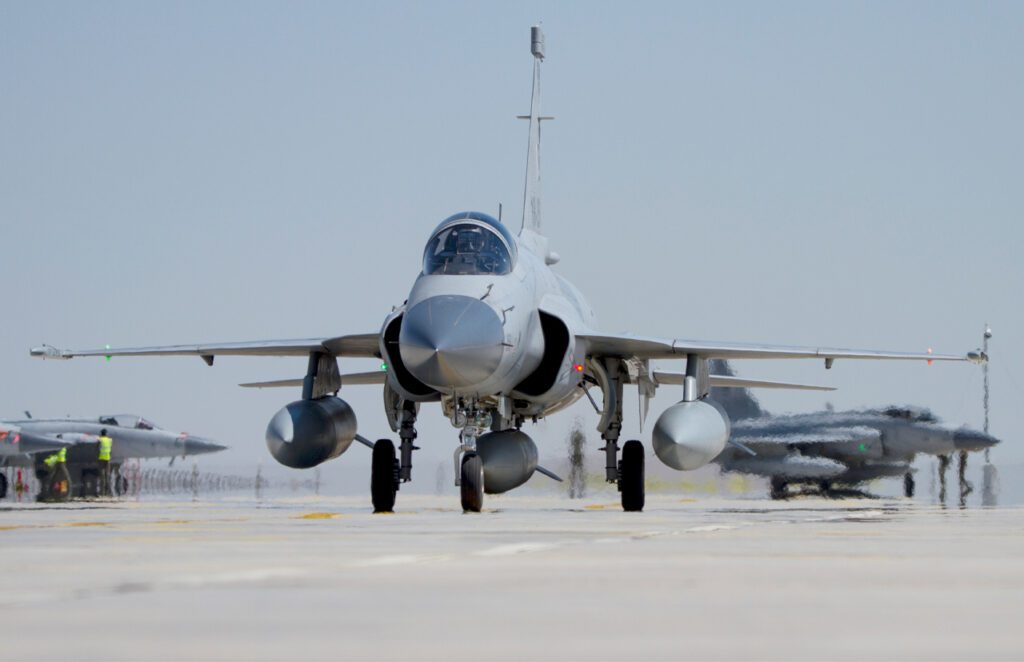
The Red Forces have their own ‘Red Building’ which is used to prepare their missions. Only personnel of the Red Forces have the permission to enter this building, while at the same time Red Force personal are not allowed to enter other buildings. The Turkish and foreign squadrons are put in the Blue-1, Blue 2, and Blue 3 buildings.
If an aircraft is ‘killed’ during the missions, certain specific procedures are to be followed. After being shot, the aircraft has to fly to a pre-designated location and fly for around one minute. If required, the dead aircraft is declared ‘alive’, simulating that a new aircraft has arrived to take on the fight.
Normally, there are two missions flown daily, Eagle-1 and Eagle-2. The day of a pilot usually starts around 0700 hrs with the Eagle-1 briefing. Around 0930 hrs, the first aircraft take off and the mission ends around 1230 hrs. At the same time, the Eagle-2 flight briefing is already underway and the actual mission starts around 1430 hrs. In the meantime, debrief of the morning mission is underway. The Eagle-2 flight ends around 1800 hrs. Between 1100 hrs and 1700 hrs the mission planning sessions for the next day are conducted. Back-to-back missions are flown throughout the second week uptill Thursday, when only Eagle-1 flight is carried out. This marks the end of the action. The mass briefings are held and participants prepare for the flights back home.
Anatolian Eagle 2021
After two years of break, fighter jets once again roared in the Ex Anatolian Eagle 2021 held at Konya. Strict COVID-19 SOPs were enforced by TuAF to ensure safe and healthy environment for the participating air crew. The exercise was held from the 21 June to 2 Jul. This year, the air forces of Qatar, Pakistan and Azerbaijan participated with their fighter jets. NATO also participated with an AWACS aircraft. Besides these countries, observers from Bangladesh, Belarus, Bulgaria, Burkina Faso, Georgia, Iraq, Sweden, Kosovo, Lebanon, Hungary, Malaysia, Nigeria, Romania, Tunisia, Ukraine, Oman, Jordan, and Japan were also present. The Turkish Army, Navy forces and special operations troops were also involved in the training.
A NATO Response Force was created for the first time which consisted of six F-16’s, one KC-135R and six Stinger Air Defence Teams. The Turkish Navy participated with two Frigates and two fast-attack missile craft boats. 38 Turkish Fighting Falcons were deployed at Konya by the Turkish Air Force. The ANKA-S UAV of 302 squadron also took part in the exercise.
A week before the real game starts there is an incessant movement at Konya Air Base. The ramp area of the civil airport at Konya is used as temporary parking space for the larger aircraft like the C-130, A-400, and C-17. On a specified day, all participants arrive and a Mass-in Briefing takes place. A specific day is used for familiarization flights, which serves to familiarize the pilots with base operations and training areas. The same day is also used for mission planning of the first exercise day.
A brother-in-arms for the Turkish military and a regular participant of the Anatolian Eagle, Pakistan Air Force participated wholeheartedly this year, as well. PAF’s first participation in Konya was back in 2004, and this year was the ninth time, PAF flew to Turkey for AE. This time around, PAF chose the JF-17 Thunder to participate in exercise. Although, PAF’s JF-17s have been upgraded to Block III, the five aircraft that flew during the exercise were the Block II variant.
Qatar Air Force with their new Rafale aircraft certainly made things interesting for PAF. “This will be the very first time that PAF and TuAF pilots had an opportunity to pitch their Air Warfare capabilities against the Qatar Air Force Rafale jets, which was recently bought by India and Greece,” said a military official.

The Azerbaijan Air Force made their debut in the exercise this year. They participated with two Su-25 and two Mig-29 aircraft which added variety to this year’s edition of exercise. The pilots carried out flights to study flight zones, flight landing strips and the air navigation state along the route. These missions helps the aircrew to get familiarized with the conditions at the departure and landing fields, as well the alternate airfields.
PAF’s No 16 Multirole Squadron “Black Panthers” was selected by PAF to participate in the exercise. It was a matter of great pride for the combat crew of the squadron to participate in an international exercise of such nature. The squadron commander chose the best possible team comprising combat crew, aeronautical engineers, technical ground crew, and support personnel for the exercise. Then started the preparations for the participation in exercise. First on cards was the planning of ferry flight from Pakistan to Turkey. Multiple hops en-route were selected for the ferry flight to ensure smooth and safe flight all the way to Konya.
On arrival, the PAF contingent received a warm reception by their Turkish counterparts. Hugs, exchange of patches and greetings was the order of the day on arrival. A specified area on the tarmac at Konya was designated for the PAF contingent and their assets for the entire exercise. Before the exercise officially started, the Pakistani participants were given an opportunity to undertake few sorties to familiarize themselves with the terrain and area of operations.
What makes international air force exercises so beneficial is the fact that the event is attended by a diverse number of pilots and aircraft from various countries. This makes the exercise a crash course in practical skill and knowledge for the participants.
Another important aspect of this international exercise is to enhance mutual cooperation and diplomatic relations between the participating countries. Air and ground crew regularly interact with their counterparts during briefing sessions, flight lines and other social activities planned during the two week long exercise. Long lasting friendships are developed between the comrades which would be cherished for the years to come. The exercise also provide an excellent opportunity to understand various diverse cultures and complement each other in achieving a common goal.
An important high light of the exercise was the visit by Air Chief Marshal Zaheer Ahmed Baber Sidhu, Chief of the Air Staff Pakistan Air Force on 1 July 2021. He along with his Turkish counterpart, General Hasan Küçükakyüz remained at the base for some time and witnessed the ongoing operations carried out during the exercise.
On his arrival, the Air Chief was given a detailed briefing about the conduct of the exercise. While interacting with the participants, the Air Chief praised the operational readiness and professionalism of the participating aircrew. He also underscored the significance of training in air operations for synergetic and effective employment of assets in a real scenario. He further added,
“Such exercises contribute immensely in achieving greater synergy and cooperation amongst friendly forces.”
After two weeks of aerial combat, another AE episode came to an end. It is clear that the Turkish Air Force is going to continue to evolve the exercise and play a significant role in aerial warfare training for the participating air forces of the region for coming years.
